
by Jennifer Burden | May 4, 2015 | 2015, Health, Motherhood, Save The Children, World Interviews, World Moms Blog, World Voice
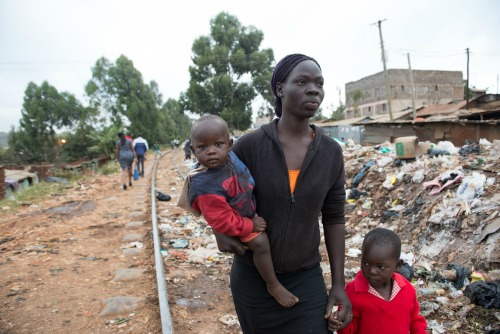
Family living in Kibera, the largest slum in Nairobi, Kenya.
Last week, World Moms Blog conducted an exclusive interview with Save the Children’s President and CEO, Carolyn Miles and Vice President of Global Health, Robert Clay at the United Nations headquarters in New York City. Our conversation was around the State of the World’s Mothers Report for 2015, released today! Carolyn had recently returned from Haiti, and was enthusiastic to speak about this year’s findings…
Jennifer Burden: The State of the World’s Mothers Report now covers 179 countries, how many years has it existed?
Carolyn Miles: This is the 16th report, and I have been with Save the Children for 17 years. It came about as a connection between the well-being of mothers and children around the world. The report measures the well-being based on 5 indicators: economic, education, maternal health, child survival and the representation of women in government.
JB: The theme of the report in 2015 seems to focus on urban areas. Save the Children is pulling apart statistical averages in cities. Why?
CM: It is driven by getting to the hardest to reach children. Seventeen thousand children die per day. That has halved from 33,000 since 1990. We are answering the question of, “Where are the hardest to reach children?” And the cities are where the world’s population is going. In 2007 there were 51% of people on the planet living in cities. Today that number is 54%, and the city population is rapidly increasing. Cities are where the children, mothers and parents are living.
Families move to the cities looking for a better life, but in the poorest areas, the urban slums, children there are 2 times as likely to die than the richest kids in the same city.
If you look at the averages, the averages in cities are generally better than in rural areas. But, if you break it down, the poorest kids in cities are 2 times as likely to die as the richest kids in cities. And, those kids are also more likely to die than children in the rural areas.
JB: The urban data — when we think of child survival rates and socioeconomic disparities, most may think of cities such as Kampala, Delhi or Rio, but the report hits home, here, in the U.S. Can you tell us about Washington, D.C.?
CM: Yes, we looked at 25 capital cities in high income countries and the infant mortalities, including the deaths of infants under the age of one. Washington, D.C. was at the bottom. When we compared the wealthiest district and the one with the most poverty, children in the district with the most poverty were 10 times more likely to die than children from the wealthiest district.
Inequality is an important issue in the United States.
Urbanization in 2030 is expected to account for 65% of the population and to further increase in 2050.
Also, a key point is that the data is weak. We are looking at the DHS infant mortality rates, and the world needs to do a better job in accounting for this data.
JB: What was the biggest surprise this year?
CM: It was no surprise that the Scandanavians are always at the top. If we really want mothers and children to have a better life, we should support them.
To give a really specific answer, inequality is killing kids.
I just returned from Haiti 2 days ago. Haiti is in the bottom 10 and hasn’t been there in a long time. Number 1, the country has a very low education rate. Fifty percent of children do not get through primary school. Number 2, the decreased strength in the government slowed progress. I met with a bunch of moms and babies who are getting very basic healthcare, but more has to be done.
(Haiti is tied at number 169 with Sierra Leone in the 2015 Mothers Index Rankings and was just shy of the bottom 10 at number 168 last year in the 2014 Mothers Index Rankings.)
JB: What was the biggest success story?
CM: Panama made a lot of progress this year and has moved up in the rankings. This was driven by education and improvements in the representation of women in their government.
(Panama moved up to number 78 in the 2015 Mothers Index Rankings. That is a jump of 31 spots, from a ranking of number 109 in the 2014 Mothers Index Rankings.)
JB: As I read in the report, Carolyn, you have an interesting “World Mom Moment” that led you to leave the corporate world and work for Save the Children. (According to the State of the World’s Mothers Report 2015, Carolyn was in Manila holding her 6 month old son 20 years ago, and she felt that it wasn’t right that children she saw in poverty would have a very different chance at life than her son. It was that experience that led her to leave the corporate world and join Save the Children.) So, on World Moms Blog, we always ask, “What is your wish for world mothers?”
CM: Yes, I did, in Manila while holding my son when he was a baby! My wish is mostly that every mother has the basics: basic healthcare, that their children can go to school, and in conflict countries that moms and children are protected.
JB: What is the one action you would like us to take and encourage our World Moms Blog community to take to help mothers and children worldwide?
CM: Just one? (laughter) Please go to the Save the Children Web Site!
1) Donate to the programs — there are many choices!
2) Save the Children has a policy ask. To press the US government, a world leader in child and maternal health, to pass the Coons, Graham and Cardin Bill to support global maternal and child health programs. We must keep pushing.
3) In the new UN Goals there is a big focus in inequality. We think that is REALLY important that we ask that these goals are supported in order to reach the most deprived kid. These are the goals that every country will sign off on.
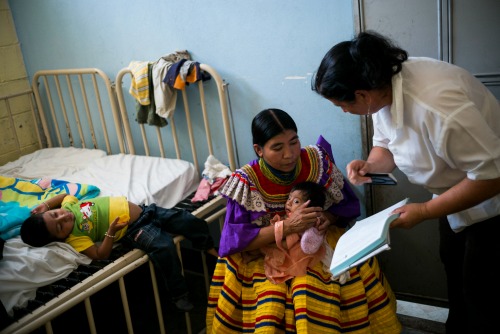
Photo credit to Save the Children.
JB: Next, we have fielded some questions from our World Moms Blog contributors. First, Cindy Levin, the Anti-Poverty Mom in Missouri, USA asks, “What is the biggest area of opportunity to save kids lives this year…vaccines? nutrition?”
CM: It is hard to pick one. This year it’s important to get the new goals right, and we’re pushing for children to be central to them. In 1980 that is how things were done — one goal would be focused on. But when you only have a vertical lens, you’re not taking advantage of the integration of services.
Now, the focus is on smart integration to meet the demands of the children.
For example, in Nepal, the focus is on nutrition, as well as, water and sanitation. If a child is getting proper nutrition, but is drinking dirty water, then they are going to get sick and the nutrition alone won’t help. They have to work together.
JB: Next, our contributor, Kristyn Zalota of Cleanbirth.org in Connecticut, USA asks, “The largest obstacle moms in Southern Laos have to reaching a clinic is distance and lack of transportation. How common an obstacle is this for women worldwide?”
CM: Very common. Transport is a big barrier for women worldwide. Some of the solutions we are using are to construct mother homes next to clinics to decrease the distance, and her family can join her, like a birthing hut system. Another way to get the pregnant mother to the clinic is by ambulance. We line up the ambulances ahead of time in anticipation of the birth. For example, in Uganda, bicycle ambulances are used, and they have a sled in the back for the mother.
JB: Lastly, Maryanne W. Waweru of Mummy Tales in Kenya asks, “In societies that are very patriarchal and in communities that still uphold retrogressive cultures (this is so in many African cultures), where a woman’s reproductive health decisions are dictated by men (fathers, husbands, brothers, etc.), how is Save the Children working with men in this regard? Any examples?”
CM: This is a really important question. I’ll give you an example in Uganda, where there are lots of family planning clinics available that are supported by the government. But yet, we found that not all mothers were using them because they had not gotten permission from their husbands. So, sometimes access is not the problem.
Save the Children is encouraging and having “family discussions”, a way of bringing men into the discussions. We give them stats, economics, etc. that leads to the the better health of children and family spacing.
Robert Clay: Save the Children also works with adolescents on this topic. We are bringing boys and girls into the discussions before they are having children, and we talk to them about their roles and responsibilities.
Another example of how I have seen this work is through my prior work with USAID. We had soccer games for the boys with an additional afternoon discussion around sexuality. At the beginning, most of the boys only wanted to play soccer and made it clear that was what they preferred to do. Many were hearing for the first time factual information about sex, their roles as men and how to establish responsibility early on. Then, as they attended more discussions, the boys spoke of their preference to spend more time in the discussions than playing soccer!
Additionally, there is a women in government piece to this question. Societies with more women in decision making roles pass policies that are friendly to women and children. And when it comes to economics, when women have money they invest in their children.
Thank you to both Caroline Miles and Robert Clay for this exclusive interview. After the interview, there was a press conference at UN Headquarters including information on the 2015 State of the World Mothers Report. Look out for a follow up post on WorldMomsBlog.com about the press conference.
This is an original post to World Moms Blog by founder, Jennifer Burden of New Jersey, USA.
Updated May 5th, 2015. Carolyn had her “World Mom Moment” in Manila, not Hong Kong, as previously stated.
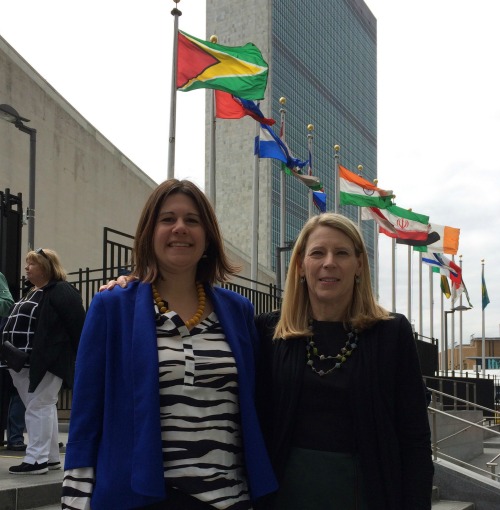
Jennifer Burden, Founder of World Moms Blog with Carolyn Miles, President and CEO of Save the Children at the United Nations, April 30, 2015.

Jennifer Burden is the Founder and CEO of World Moms Network, an award winning website on global motherhood, culture, human rights and social good. World Moms Network writes from over 30 countries, has over 70 contributors and was listed by Forbes as one of the “Best 100 Websites for Women”, named a “must read” by The New York Times, and was recommended by The Times of India.
She was also invited to Uganda to view UNICEF’s family health programs with Shot@Life and was previously named a “Global Influencer Fellow” and “Social Media Fellow” by the UN Foundation. Jennifer was invited to the White House twice, including as a nominated "Changemaker" for the State of the World Women Summit. She also participated in the One Campaign’s first AYA Summit on the topic of women and girl empowerment and organized and spoke on an international panel at the World Bank in Washington, DC on the importance of a universal education for all girls. Her writing has been featured by Baby Center, Huffington Post, ONE.org, the UN Foundation’s Shot@Life, and The Gates Foundation’s “Impatient Optimists.” She is currently a candidate in Columbia University's School of International and Public Affairs in the Executive Masters of Public Affairs program, where she hopes to further her study of global policies affecting women and girls.
Jennifer can be found on Twitter @JenniferBurden.
More Posts - Website
Follow Me:


by Melanie Oda (Japan) | Apr 17, 2015 | 2015, Awareness, Cooking, Cultural Differences, Culture, Domesticity, Expat Life, Eye on Culture, Family, Food, Health, Home, Identity, International, Japan, Life, Life Balance, Living Abroad, Maternal Health, Me-Time, Motherhood, Multicultural, SAHM, Social Equality, Stress, Time, Traditions, Womanhood, World Motherhood
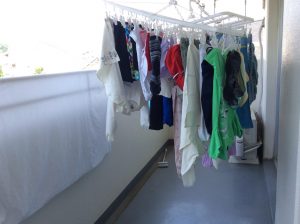 I start my morning here in Japan the same way every day: by cleaning out the drain trap.
I start my morning here in Japan the same way every day: by cleaning out the drain trap.
Not very pretty, I suppose, but I’ve learned the hard way that it needs to be done frequently and well. The drain traps here in Japan are metal mesh to prevent food from going down the drain. They get gross very quickly.
I’m pretty sure I started out my days when I lived in the US with a cup of coffee, which seems quite glamorous by comparison!
In spite of our gains in education or employment opportunities over the last century, much of our time as women gets taken up by mundane household tasks like this. Women all around the world are doing the same kind of things: laundry, food preparation, cleaning, child care, though in very different ways.
It makes me curious. How much of your time gets spent on “daily chores?” What kinds of things do you need to do every day? Do you do them alone, or do you have help?
Perhaps it is a boring topic, but for comparison I thought I would share a little bit of what housework is like here in Japan.
Laundry gets done daily in most families. We have washing machines, but most people don’t have dryers. In a country with cold winters, humid summers, and a rainy season, keeping up with the laundry feels like a daily battle! When the weather is not cooperative, laundry gets hung from curtain rails or any other overhang that can be found indoors. We have to bob and weave our way around the house. Imagine that Catherine Zeta Jones movie, but with laundry instead of lasers.
I do the shopping most days as well. This is quite common here in the greater Tokyo area, where storage space is limited and many people do not have cars to allow buying in bulk. Milk is sold by the liter; laundry detergent in 500ml bottles. The biggest shopping challenge is buying rice, which comes in 5 or 10kg bags.
I need to dust and vacuum every day. This is much more often than we did in the US growing up. I’m not sure why Japan is so dusty. Could it be the tatami floors? The single pane windows? The small living space? And more important than why, how can I make this dust accumulation stop?
Japanese cuisine seems to be gaining in popularity around the world. Many Japanese people eat a full meal in the morning (though this is slowly changing,) as well as at lunch and dinner. Japanese bento are also getting a lot of attention on the Internet for being nutritious as well as visually appealing. Overwhelmingly, the cooking is done by women. (Personally, since my children’s lunch is provided by the school, most days I cook twice.)
Like most families here, we have a gas stove-top, a rice cooker, and a microwave combined with an electric oven for cooking. My mother-in-law has a separate gas burner that can be placed on the table for doing things like sukiyaki or okonomiyaki, foods that are consumed as soon as they are cooked by the family from the same dish. My children are still a bit too small for me to attempt this at home.
I think many of us around the world are doing these same things, but the nitty-gritty of how we get it done and how often we do it are different. I can’t help but wonder what housework says about the values of the culture.
In the US, for example, many families take pride in a well-decorated home. In Japan that is much less important. (Perhaps because many women are spending all that time dusting and dodging laundry….)
What kinds of things are included in your daily duties? How do you feel about doing them?
This is an original post to World Moms Blog from our writer in Japan and mother of two, Melanie Oda.
The image used in this post is attributed to the author.
If you ask Melanie Oda where she is from, she will answer "Georgia." (Unless you ask her in Japanese. Then she will say "America.") It sounds nice, and it's a one-word answer, which is what most people expect. The truth is more complex. She moved around several small towns in the south growing up. Such is life when your father is a Southern Baptist preacher of the hellfire and brimstone variety.
She came to Japan in 2000 as an assistant language teacher, and has never managed to leave. She currently resides in Yokohama, on the outskirts of Tokyo (but please don't tell anyone she described it that way! Citizens of Yokohama have a lot of pride). No one is more surprised to find her here, married to a Japanese man and with two bilingual children (aged four and seven), than herself. And possibly her mother.
You can read more about her misadventures in Asia on her blog, HamakkoMommy.
More Posts

by World Moms Blog | Apr 2, 2015 | 2015, Awareness, Being Thankful, Boys, Celebrations, Childhood, Culture, Guest Post, Health, Identity, India, Inspirational, Life, Life Lesson, Milestones, Motherhood, Priorities, Time, World Motherhood, Younger Children
 One moment everything seemed fine and the next I was creating a little puddle of tears on my Yogasana mat.
One moment everything seemed fine and the next I was creating a little puddle of tears on my Yogasana mat.
I emerged from the yogasana pose to find unexpected sobs bursting through my throat, catching me completely unawares. A little part of my mind wondered what this was all about. And then I realized this was probably because of a niggling dissonance within, a reaction to a new milestone in my son’s growth that had not yet been completely accepted or acknowledged. This is what had led to the sudden grey cloud near the heart, that burst through as tears.
This morning, as Abhishek, my son, was having his breakfast before leaving for school, he called out to me saying that there seemed to be a gap between his two lower incisors. I touched a tooth and immediately found it was loose. The milk tooth would soon fall. We grinned and Abhi told me about how Kirti, his school mate, already had two teeth missing. I thought of a couple of his other friends, senior to him by a year, wearing gap-toothed smiles with part-embarrassment, part -pride. Now he would be a part of that gang too.
As we waited at the bus-stop for his school bus, we talked of the concept of the tooth-fairy. We both agreed that the concept was “cute”. I bid him bye, returned home and resumed my morning chores.
But somewhere in the heart, deep, deep down, the unarticulated thought had arrived – our little baby is about to lose his baby teeth. How did the years fly by so fast? And that would have been the genesis of the tears.
The innocence and unsullied grace of childhood are truly magical and seem long-lasting. But the pace of change and growth can actually be so rapid, that the heart can seem overwhelmed. Scarcely does a new milestone–a habit, a skill, or a new activity–set in, than the “Finish” line for that zooms forward, and before one knows it, it is time to say goodbye to yet another phase of one’s child’s growing years.
So much to cherish and so little time! It seems like it was only yesterday that I was rhapsodizing over Abhishek’s four new, shiny little teeth and feeling nostalgic about toothless, gummy smiles. And now it’s time for those very teeth to go!
“So what?”, one may wonder. A purely practical approach to this whole thing would be that his physical growth is going on fine and that I ought to be feeling reassured!
But to me it seems to be much more than that. His shaky little tooth tells me a lot of things. It reminds me that he is growing up quickly and that the only mandate I have been given from the Universe is to give him love, pure and unadulterated, intense and in every moment. It shows me the passage of the seasons of time – the travails of toddler-hood have given way to heart-touchingly earnest attempts at responsibility for this sweet-yet-solemn almost-six-year-old.
But most of all, the tooth reminds me that “this too shall pass!”
So must change be heralded by tears? Not at all. Something tells me that some of the tears were tears of regret, for all those “Not now please, I am busy” moments, when I allowed temporary realities to hijack my energies away from the greater priority of sharing my time and care with him.
Those moments are irretrievable and all I can hope is that this tooth has taught me a valuable learning. And then there were a few tears of concerns: am I ready to guide him right as he reaches a new phase of growth? As ready as I will ever be, I guess.
And then there were tears of joy: my little one, darling creature of the Universe, is growing up.
Motherhood seems like a permanent stage of “Work in Progress”. There is no “Finished Product”, just a heart that smiles, cries, is pulled and stretched and learns to give some more.
This is an original guest post from Piya Mukherjee in Mumbai, India; Mother, Corporate Trainer, Director.
The image used in this post is attributed to Stephanie Sicore of Young@Art. It holds a Flickr Creative Commons attribution license.
World Moms Blog is an award winning website which writes from over 30 countries on the topics of motherhood, culture, human rights and social good. Over 70 international contributors share their stories from around the globe, bonded by the common thread of motherhood and wanting a better world for their children.
World Moms Blog was listed by Forbes Woman as one of the "Best 100 Websites for Women 2012 & 2013" and also called a "must read" by the NY Times Motherlode in 2013. Our Senior Editor in India, Purnima Ramakrishnan, was awarded the BlogHer International Activist Award in 2013.
More Posts

by World Moms Blog | Mar 20, 2015 | 2015, Awareness, Babies, Being Thankful, Caring, Communication, Eva Fannon, Family, Food, Girl Child, Girls, Gratefulness, Health, Humanity, International, Kids, Motherhood, Older Children, Parenting, Tinne, World Motherhood, Younger Children
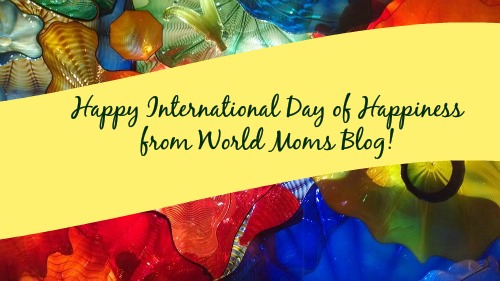 Today is International Day of Happiness! We at World Moms Blog know the importance of connecting with other people. In our technology driven societies, it becomes very easy to send a text message, an email, or to click “Like” on someone’s Facebook status…but does that actually make us feel like we made a personal connection with that person? Truly connecting is not as easy!
Today is International Day of Happiness! We at World Moms Blog know the importance of connecting with other people. In our technology driven societies, it becomes very easy to send a text message, an email, or to click “Like” on someone’s Facebook status…but does that actually make us feel like we made a personal connection with that person? Truly connecting is not as easy!
For International Day of Happiness this year, the theme is focusing on your connections with others. To help you think about conversation starters, or ways to connect with others on a more personal level, we asked our fabulous contributors this question: “What brings you happiness?” Read on to see some of their responses. (more…)
World Moms Blog is an award winning website which writes from over 30 countries on the topics of motherhood, culture, human rights and social good. Over 70 international contributors share their stories from around the globe, bonded by the common thread of motherhood and wanting a better world for their children.
World Moms Blog was listed by Forbes Woman as one of the "Best 100 Websites for Women 2012 & 2013" and also called a "must read" by the NY Times Motherlode in 2013. Our Senior Editor in India, Purnima Ramakrishnan, was awarded the BlogHer International Activist Award in 2013.
More Posts











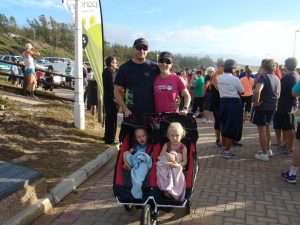






 Today is
Today is 


